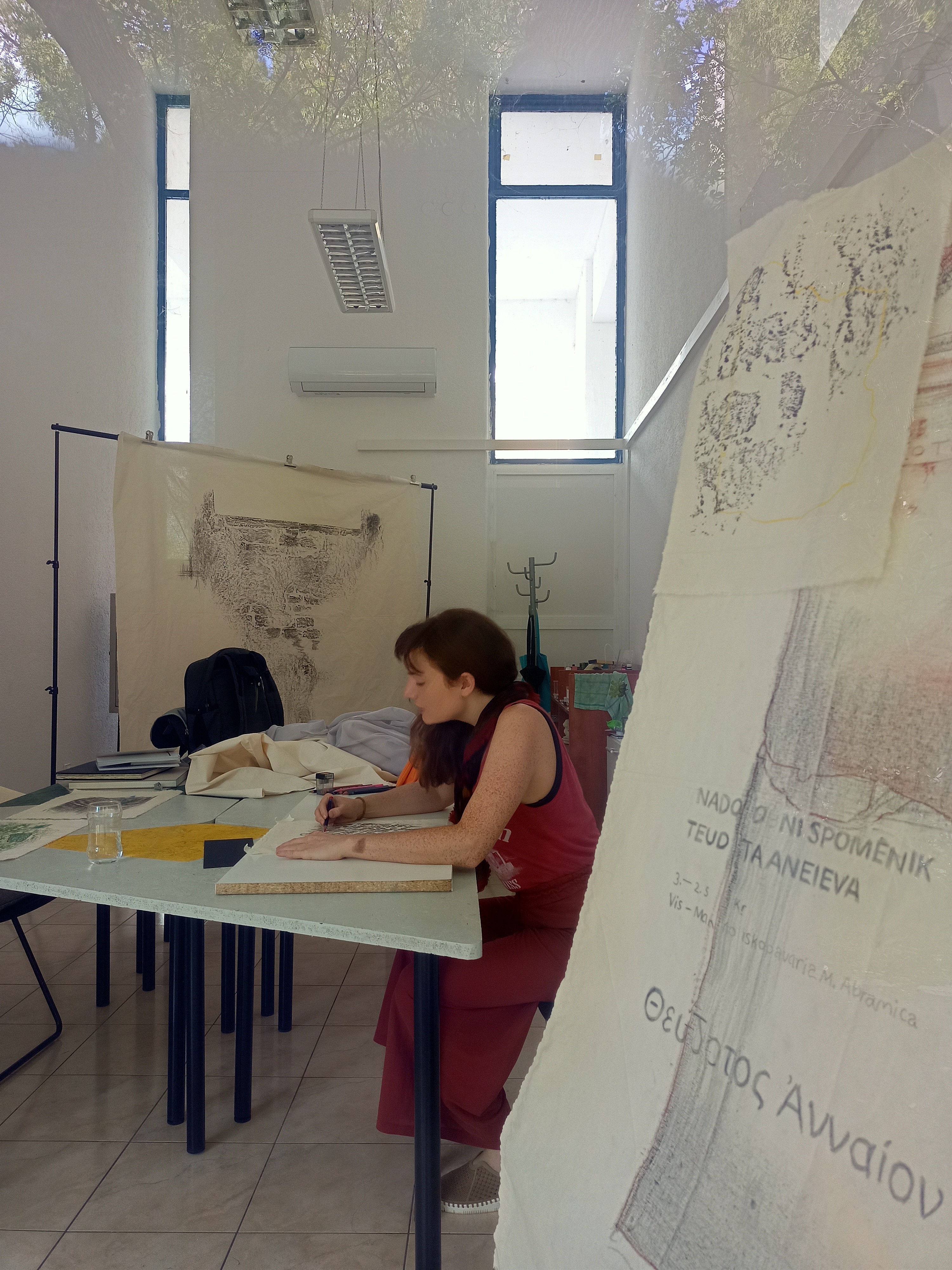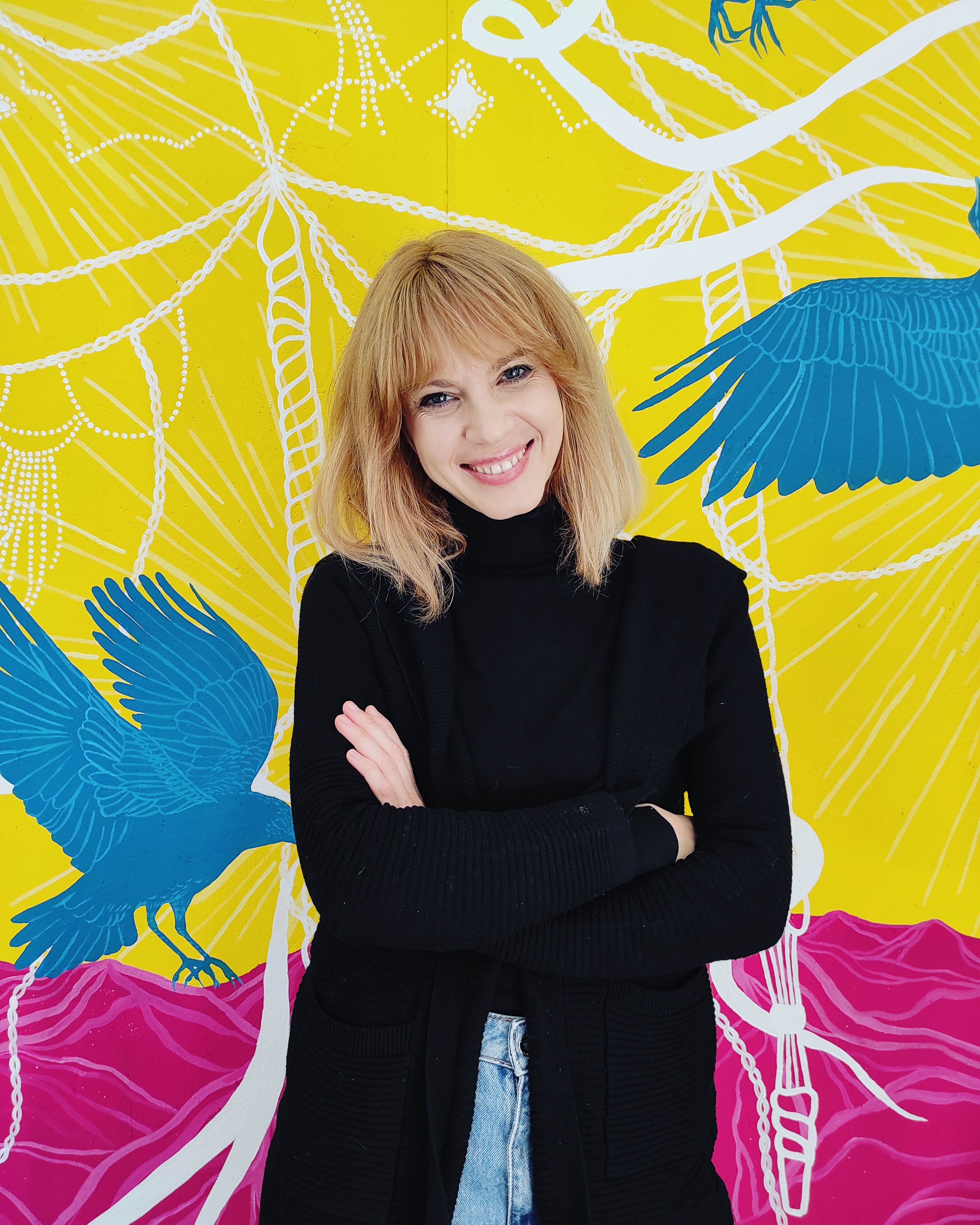Culture Hub Croatia is using education, culture and creativity for development of local communities through transmission of knowledge and European expertise and through promotion of art practices, cultural heritage and informal education. Their work is based on collaborations, experimentations and explorations of innovative approaches. Since July 2021, Culture Hub Croatia is managing the creative hub in Split called [PROSTOR], featuring a coworking space, open studio, gallery and events space, artist residency and hostel for plants.
What’s the story behind your hub?
We started thinking about this idea in 2016. It was two of my colleagues and I. We studied together at the university in Split and we had some of our first professional experiences in Croatia and abroad. We met again in Brussels, where we did our internship at the European Commission. Having that insight on how institutions work was inspiring, because we really wanted to do something different and on our own. You are very much detached from the final outcome when you are part of a big organisation and sometimes having more tangible and immediate outcomes of your work is much more rewarding, so we imagined ourselves doing a socially important project, targeting specific needs of our community. All the examples from abroad motivated us to do something similar in Split. There wasn't any similar organisation here and we thought there was a gap.
We started with very small events in our local community and this helped us understand who was around and what the local needs were.
We became part of ECHN very early on and it was super valuable because it allowed me to connect with people and understand how their hubs work. By visiting European hubs and by exploring their models, we came to the idea that we really wanted a physical space in Split, but we also understood that it was kind of a dream - we were just three young recent graduates and we didn’t really know how to do it, but we still wanted to try.
We established an association and the goal was to bring people together around the idea that culture can be very important for development. We started with very small events in our local community and this helped us understand who was around and what the local needs were. We were aware that this is a context where young people feel like they cannot really change anything. Split is the second biggest city in Croatia but it is still small, with less than 200.000 inhabitants and everything is oriented around the tourism industry. There is not much hope of finding work if you are in the cultural sector. Many young people moved abroad or to Zagreb and we were some of those people. The fact that I was abroad too was positive because I wasn’t impacted by this negative mentality, I was very positive that we could do things. It was also important that one of us was in Split connecting with local stakeholders and the community. So we were not just random people from abroad willing to change things, but people who were well connected locally. We started with very small-scale events.
Then, we got our first European project from the Erasmus+ program. It all started from there, because that project allowed us to be more recognised at the national level and to apply for funds. Everything was quite slow; sometimes people think that things will happen overnight but for us it took a couple of years.
We scanned the available spaces, but most of them were given to touristic activities.
The goal was always to eventually open a physical space. Not having it at the beginning was good, because we were nomads without the burden of managing a space and we were free to nurture our community. One of our flagship ideas/actions back then was to repurpose some empty buildings in the city centre, seeing them as temporary creative hubs. We had 5 small spaces and we gave them to artists as open studios and the community could propose their own activities too. This helped us test the idea of a creative hub. All the functions we tested in the city were elements we wanted to integrate in our own space.
Later on, we were able to get more funds, expand the team and be able to earn money. At this point, we really needed a space to host people and activities. We scanned the available spaces, but most of them were given to touristic activities. Eventually, we found a private space in 2021 and we rented it without knowing for how long we would afford it. It’s not far from the centre, in an interesting modernist architecture. We have a small gallery space, a work space, an open studio for artists and a small apartment for residencies. It all made sense. Since we had all that previous experience, the space was functioning from day 1 and we had already a lot of audience. It’s important to work before the opening of a hub, making sure you have the audience right away.
Why did you choose to set your hub in Split?
The whole team is from here so it didn’t make sense to do it somewhere else. We wanted to show young people by example that things can change. The city has a lot of potential but there are many challenges and the city doesn’t support you. Everyone is going to tell you that your project is not going to work. You have to be strong enough to resist those comments and do your thing.
What did your hub manage to (re)build?
In Split, not much was going on. We arrived in a situation where you never feel invited enough to participate in initiatives, the scene was not inclusive enough. We created an open space where people feel welcome. People come and start suggesting things, proposing activities, trying to understand how they can become members. We created an inclusive space that allows everyone to use it in a way that they give something and we give something back. We wanted to foster that exchange.
We promote the modernist heritage of the area, which is being rediscovered. Every time we invite artists, we invite them to reflect on the space and the area where we are.
Here, culture is considered as something you don’t have to pay for, but actually there is a lot of work behind it and people need to be educated about it. People cannot expect that culture is always for free and you need to make some effort to get something. We have a paid membership with a small fee, but we also have a membership where you don’t pay with money but with your time. To be sustainable and inclusive, we try to combine things that are for free and things you have to pay for.
At the beginning of every year we publish a call where you can “adopt” the space for one day and do your activity. Our hub is located in a residential area, and the people who live in our building are our immediate audience. So we have some activities for kids, they come here without their parents, they got used to us. If we were in an industrial area, our hub would be completely different. The space is shaped by its surroundings and vice versa. We promote the modernist heritage of the area, which is being rediscovered. Every time we invite artists, we invite them to reflect on the space and the area where we are.
How do you envision the future of your hub?
We are now trying to develop our audience locally and to better connect with local schools to arrange some study visits in our space. We want to build new local partnerships and to hear the needs of the local people and organisations. We also want to work on sustainability, as it is very stressful to think about funding. We want to expand the team and that comes with more responsibilities. We thought of developing some consultancy services that would help us have some additional income and avoid being fully dependent on grants. We are also looking into more rural areas, which are really not explored in Croatia and have a huge potential. Maybe the next experimental phase might happen in that area, thinking of a second location there.
 Spotlight Practice 1: Experimentation as a model
Spotlight Practice 1: Experimentation as a model
It’s a good model for those hubs who are just starting, to understand how you can test things and do your things without having a physical space. This is relevant especially for those regions where it is hard to find a suitable space for your hub. Not having a fixed location allows you to be more experimental and explore alternative solutions that you wouldn’t otherwise consider.
 Spotlight Practice 2: Artist Residencies
Spotlight Practice 2: Artist Residencies
According to the CHC’s model, anyone can apply to become a resident, not only artists but also cultural workers and anyone who wants to develop a collaborative project, especially other creative hubs. For international participants, there is a small fee, which is then invested back into the hub. To support the artists in residence, the hub helps in finding the right grants and hosts the participants in its own accommodation. Every year there are different curated themes. The residents are encouraged to look into the community as a whole. This is not an obligation, but having more participatory work is always an advantage for admission.

Marina Batinic is the co-founder of Culture Hub Croatia. In her journey, she travelled around Europe to finally harbour back in her hometown, Split. Here, she teamed up with other professionals and slowly shaped a creative hub that is shifting the narratives of cultural and creative workers in the region.